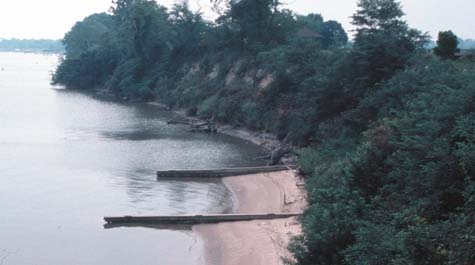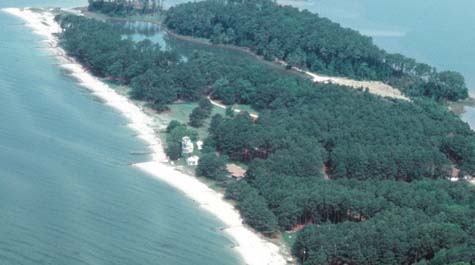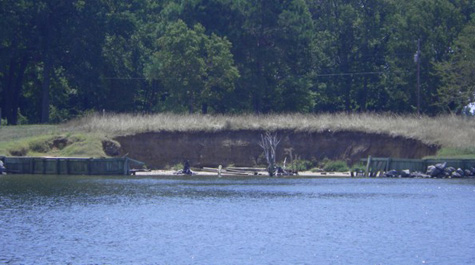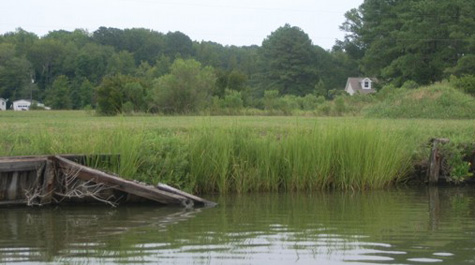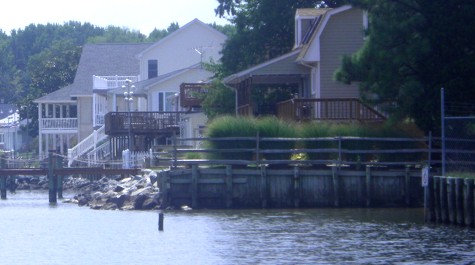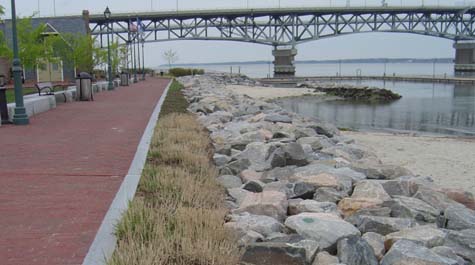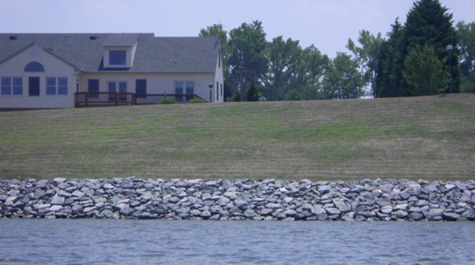Defensive Living Shoreline Structures
In order to maintain a more natural coastal profile, the Shoreline Studies Program at VIMS prefers to use Living Shoreline methods for shore stabilization. Living shorelines consist of sand, plants, and rocks that create a sloped land/water interface to protect the base of the bank, but the site-specific conditions determine the most effective configuration of these elements for shore protection.
Hard structures like revetments, bulkheads, and groins, armor and stabilize the shoreline landward of the living shoreline structure. They are often considered defensive structures since they typically defend the shoreline, but don't necessarily provide a habitat component.
Revetments
Rock or riprap revetments have sloped and rough faces that decrease wave reflection and, therefore, bottom scour. The upland bank can be graded to enhance shore protection since the large storm waves would run up the graded bank rather than erode it. However, there is often no buffer between the upland and the revetment that allows filtering of run off and, in most cases, no vegetation occurs riverward of a revetment. These structures are an effective “last line of defense” in high energy environments, but can be overtopped during storms.
In some cases, revetments may be recommended in areas that are not suitable for Living Shorelines either because the nearshore is too deep, or the structures are too close to the shoreline.
Bulkheads
Bulkheads exist along many shorelines of Chesapeake Bay. While these structures protect upland structures, they create a hard barrier between the upland and the water. The intertidal zone often disappears as erosion continues, such that no vegetation lives in front of the structure which displaces animal life. In addition, many bulkheads are mowed to their edge, which results in no filters for pollutants (sediment, fertilizer, animal waste, etc.) being washed into the Bay.
Since most bulkheads were historically constructed of wood, they will deteriorate over time and eventually fail. They tend to be reinforced or replaced with revetments. However, bulkheads that have been built in low energy areas and are now deteriorating could be removed and replaced with a living shoreline.
Groins
Groins are common sites around Chesapeake Bay. These structures are built perpendicular to the shoreline in order to capture sand from the alongshore transport system. Groins can be effective erosion control techniques if they capture enough sand to create a wide beach that may mitigate storm surge and waves. However, many areas of the Bay are sand-limited, which reduces the effectiveness of groins. These structures are typically built from wood and deteriorate over time, but can be reinforced with rock. Groins interrupt the sand transport system and can cause increased erosion downdrift.

